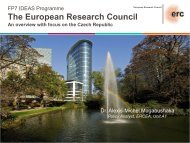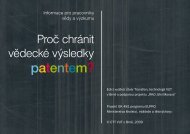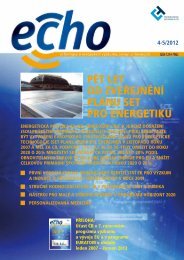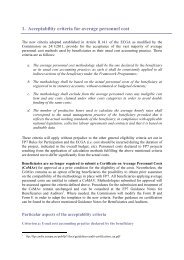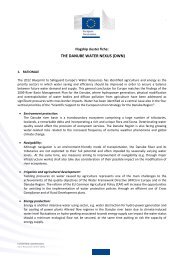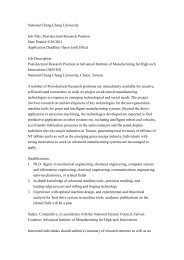Guide to Research and Innovation Strategies for Smart Specialisation
Guide to Research and Innovation Strategies for Smart Specialisation
Guide to Research and Innovation Strategies for Smart Specialisation
You also want an ePaper? Increase the reach of your titles
YUMPU automatically turns print PDFs into web optimized ePapers that Google loves.
3.2 Are these priorities sufficiently specific identifying existing/potential niches <strong>for</strong> smart<br />
specialisation <strong>and</strong> related upgrading of existing activities or potential future activities?<br />
3.3 Do the thematic priorities chosen in the strategy reflect the description <strong>and</strong> analysis of the<br />
regional economic structure, competences <strong>and</strong> skills?<br />
3.4 Does the strategy take in<strong>to</strong> account considerations of achieving critical mass <strong>and</strong>/or<br />
critical potential in the priority areas selected?<br />
4. Does the strategy identify appropriate actions? How good is the policy mix?<br />
4.1 Does the strategy include action lines <strong>and</strong>/or realistic roadmaps in line with the<br />
objectives? Are these sufficient <strong>to</strong> reach the objectives?<br />
4.2 Does the strategy indicate which bodies are responsible <strong>for</strong> the implementation of these<br />
action lines/roadmaps?<br />
4.3. How does the strategy support/facilitate:<br />
• cross-clustering <strong>and</strong> the identification of innovation opportunities at the interface<br />
between different disciplines/industries/clusters?<br />
• entrepreneurship <strong>and</strong> the innovation capabilities of SMEs, <strong>for</strong> instance by facilitating the<br />
diffusion <strong>and</strong> adaption of technologies, incl. key enabling technologies? 174<br />
• the improvement of dem<strong>and</strong>-side conditions <strong>and</strong> especially public procurement as a<br />
driver <strong>for</strong> innovation?<br />
Are there sec<strong>to</strong>r-specific support services/schemes <strong>for</strong>eseen?<br />
4.4 Does the document outline measures <strong>to</strong> stimulate private R&D&I investments, <strong>for</strong><br />
instance through public private partnerships? Does it demonstrate/aim at financial<br />
commitment of the private sec<strong>to</strong>r with the strategy?<br />
4.5. Does the strategy identify budgetary sources, <strong>and</strong> does it present indicative budget<br />
allocations?<br />
4.6 Does it include a sufficiently balanced mix of soft innovation support services <strong>and</strong><br />
financial instruments? Does it <strong>for</strong>esee an appropriate mix of grants, loans <strong>and</strong> financial<br />
engineering (venture capital)?<br />
5. Is the strategy outward looking <strong>and</strong> how does it promote critical mass/potential?<br />
5.1 Does the strategy take in<strong>to</strong> account the competitive position of the country/region with<br />
regard <strong>to</strong> other countries/regions in the EU <strong>and</strong> beyond, as well as its positioning within<br />
global value chains?<br />
173 Incl. non-technological <strong>and</strong> service-sec<strong>to</strong>r innovation<br />
174 The six KETs are: nanotechnology, micro-nanoelectronics, advanced materials, pho<strong>to</strong>nics, industrial<br />
biotechnology <strong>and</strong> advanced manufacturing systems.<br />
112



